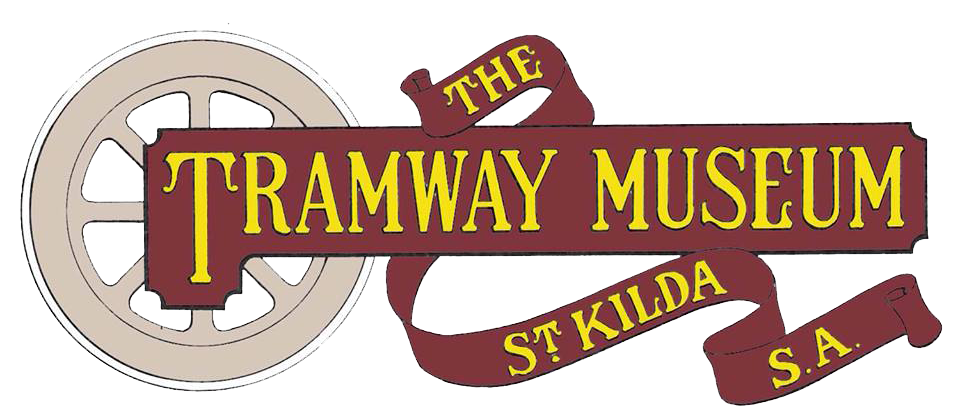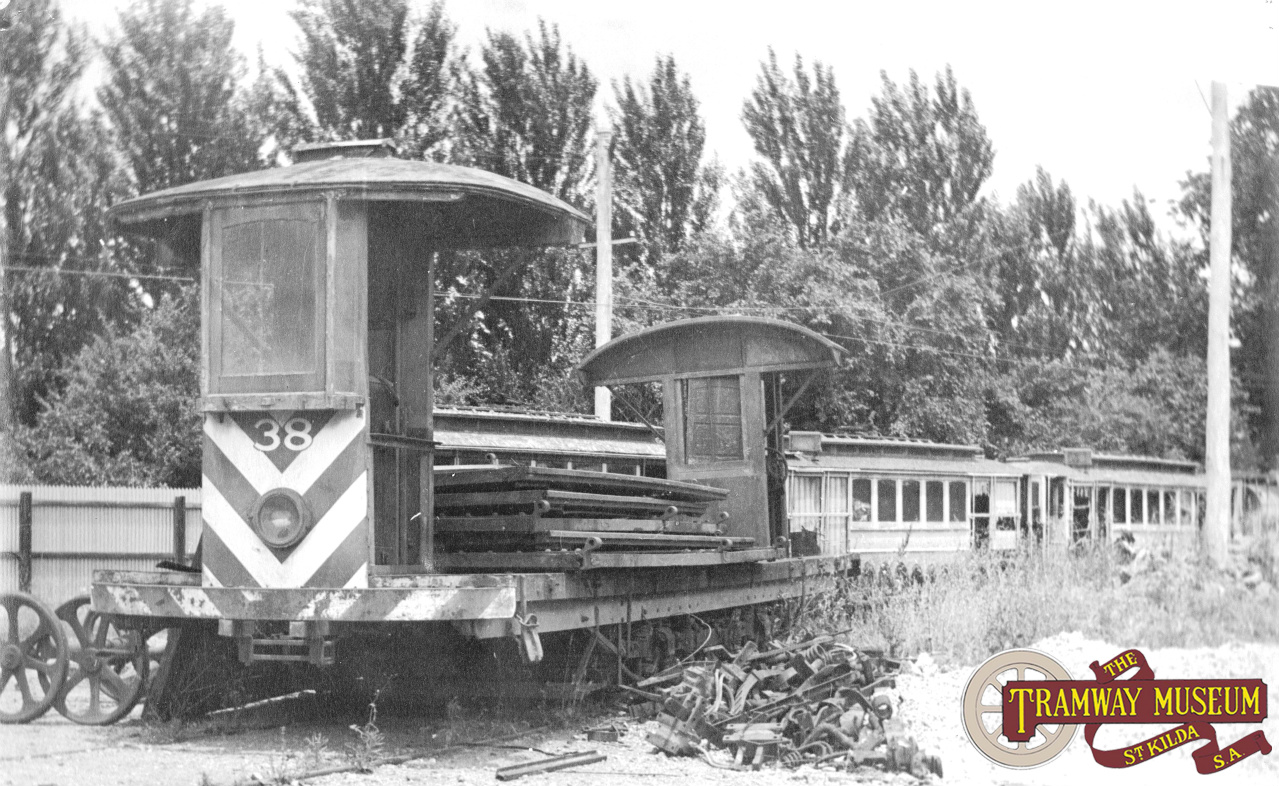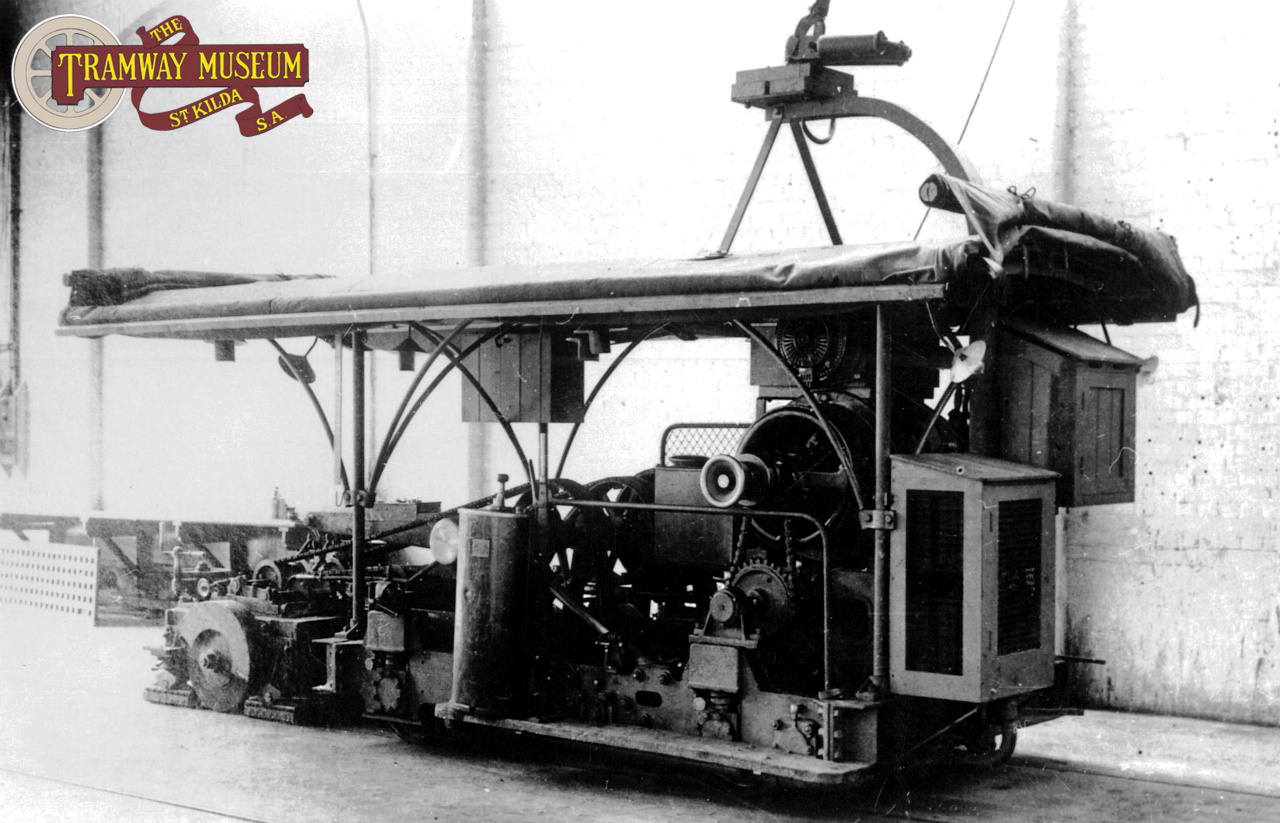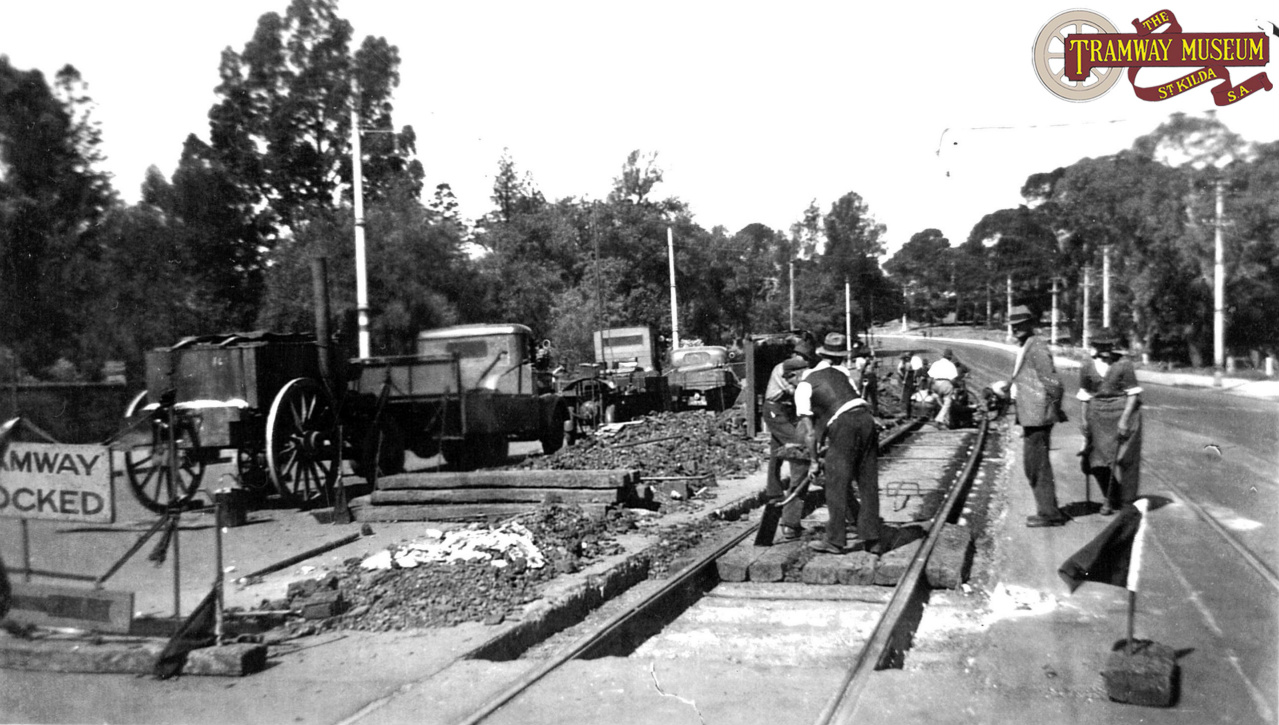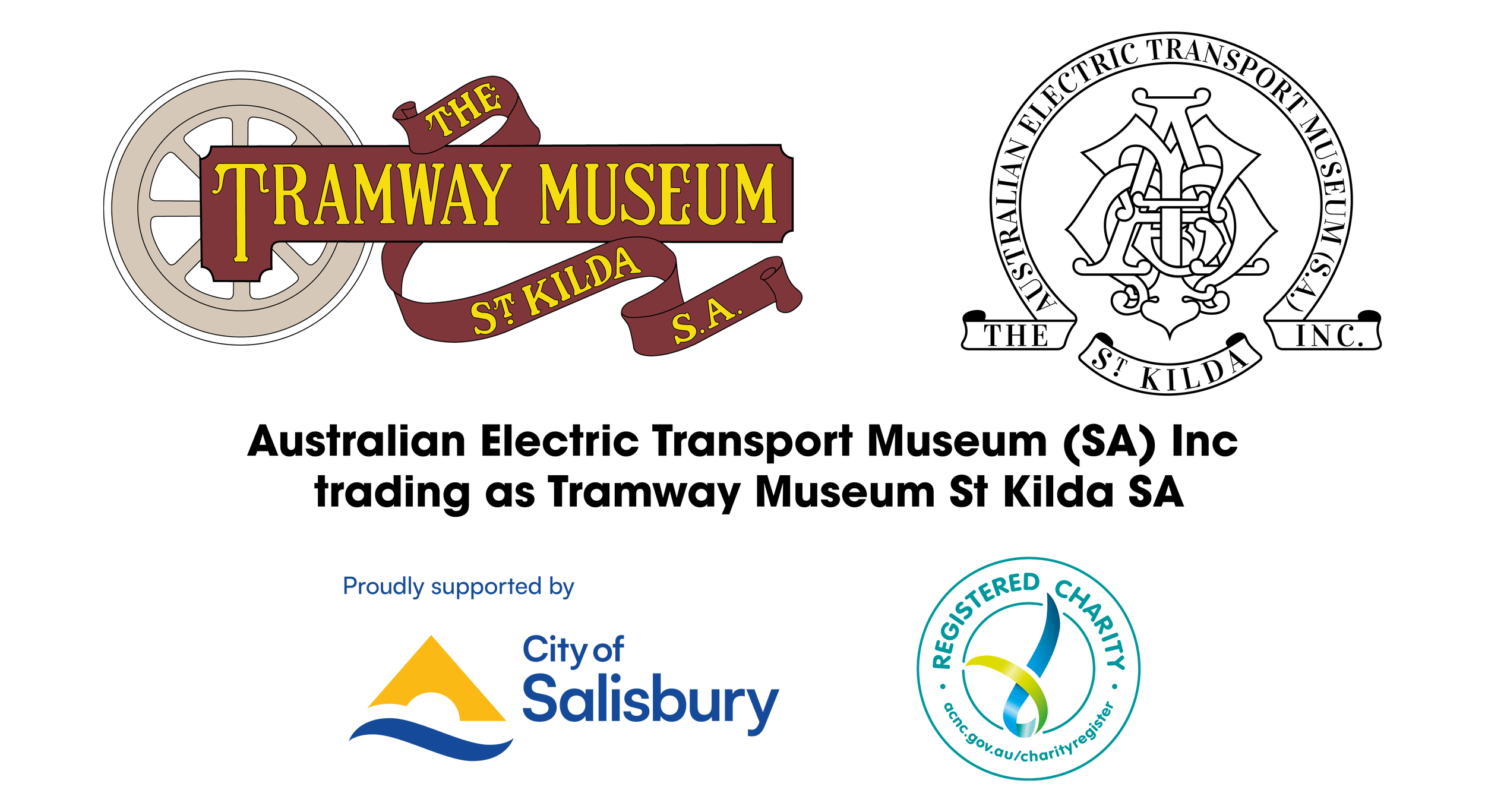Keeping the System Operating
The facilities needed to keep the former Adelaide tram and trolley bus system running were extensive and was backed up by a workforce who put in a major physical effort to maintain the system in a safe and good working order. This page here looks at where and how the trams and trolley buses were looked after and maintained.
This page looks at the various depots, workshops and other 'non passenger' tasks that the Municipal Tramways Trust carried out to keep the City of Adelaide moving.
In 1919, the 'Tramway and Railway World' (an industry magazine of the time) had a feature about the Adelaide tramway system and it included this diagram showing the layout of the extensive facilities at Hackney depot. In the years to come, additional tracks would be laid on the southern side of the site (known as the Southern Annex) while the northern end of the site would cater for the expanding trolley bus system. Photo: AETM archives.
Hackney Depot
The heart of the system:
To house the new electric tram fleet, a section of the former Government Experimental Orchard on the edge of the Adelaide Botanic Gardens covering ten acres was used for the new depot. The tender to construct the new large running shed, workshops and administration office was awarded to Smith, Timms & Company with the steelwork for all of the structures subcontracted to Forwood Downs & Company. The new depot was designed and constructed with a total of 24 tracks to accomodate the new electric tram fleet. To reduce the potential risk of fire spreading through the depot, the 24 tracks were divided in to four bays of 6 with reinforced concrete walls between them with the bays known as 'A bay' to 'D bay'. This large shed provided facilities for basic servicing of the tram fleet. Built on the side of 'A bay' were facilities for the tramway traffic staff which included not only change and wash rooms but also the 'Tramwayman's Club' room which contained amongst other things a library and three billiard tables. Behind the club room was the machine shop and running shed store room.
At the southern end of the site is what is now known as the Goodman Building which was built to serve as the administrative headquarters for the Municipal Tramways Trust. This building was where all the clerical work to operate the Adelaide tram and trolley bus system was carried out. As well as containing the offices for the General Manager and the MTT Board meeting room, the building also accomodate the superintendents responsible for the operation and maintenance of the tramway system and the trams themselves.
Despite the opening of City Depot in Angas Street during the early 1920s, Hackney depot would remain the main operating centre for the Municipal Tramways Trust. During this time, the depot area would expand further when the land immediately to the south of the Admin building was acquired for additional tram and bus storage space. The 'Southern Annex' as it was called was where a number of trams were stored before they were scrapped in later years. In the 1930s, the area at the northern end of the depot was set aside for the growing fleet of trolley buses and diesel buses that had been acquired by the Trust.
By the 1950s, the conversion of the Adelaide tramway system to bus operation would radically alter Hackney Depot. At first, trams were stripped of their mechanical and electrical equipment in 'D bay' but as fewer and fewer trams ran on the streets of Adelaide, parts of the depot were demolished. All of 'B' and 'C bays' and half of 'D bay' were demolished to provide a large bus parking area while the remaining half of 'D bay' would be used as a paint shop. 'A bay' would continue to function as a tram running shed until July 1958. In 1963, the trolley bus system was also closed down and the depot would continue to serve the all conquering diesel bus. In the 1970s, some H type trams which were being refurbished for continued service on the Glenelg line were refurbished at Hackney.
Hackney remained the administrative centre of the Municipal Tramways Trust until 1975 when the services provided by the Trust, private bus operations and the suburban railway services provided by the South Australian Railways were all merged in to the State Transport Authority (STA). After the formation of the STA, the management of the public transport system was moved to offices in Adelaide Railway Station (and later on in to a new building on North Terrace). By the 1980s, it was clear that time was running out for the former tram depot as a public transport facility. By 1986, the old workshop facilities (more information in the next section below) were demolished to make way for the Botanic Gardens Conservatory for Tropical Plants.
Hackney depot continued as a bus depot until it was finally closed in 1992. The remaining portion of 'D bay' was demolished and while 'A bay' was initially destined for the same fate but protests by National Trust and the Institute of Engineers saw that it was retained. Both the former Admin building and 'A bay'. Today, these surviving structures are used as part of the State Herbarium. The rest of the former Hackney Depot site has reverted to being a part of the Botanic Gardens with the old running shed area now a rose garden.
Behind the running sheds at Hackney was a traverser which allowed trams to be moved across the site accessing the various workshop buildings. While not its' intended purpose, the traverser pit was often used by the Tramways staff for games of cricket! Photo: MTT.
Hackney Workshops
Maintaining the fleet:
Behind the running sheds at Hackney depot were the workshops where the tram fleet was maintained, modified and in a few cases, built from scratch. Facilities included a Carbuilding Shop, an Armature Shop, a Truck Shop and a Smithy Shop. All of these workshops were also equipped with 5 ton overhead cranes and were accessed by a traverser from the running sheds.
The Car Building shop had four tracks and was equipped with all the wood working tools and machinary needed to carry out tram body repairs and refurbishment. During the 1920s, three of the eighty four 'Drop Centre' trams were built new at Hackney Workshops while all twenty of the E type trams were rebuilt to the E1 type in the mid 1930s.
The Armature Shop was served by one track and also had an inspection pit. In this workshop, the traction motors were removed from the tram running gear to be overhauled. The armatures could be completely rewound in house as well as smaller repair jobs.
Next to the Armature Shop was the Machine Shop where the fitting and turning jobs were carried out and was served by one track.
The Truck Shop was where the tram running gear was overhauled. The trucks under the trams were stripped and rebuilt in this workshop. Wheels could be turned and reprofiled while if further work was needed, the wheels could be pressed off the axles and replaced if necessary.
Finally there was the Smithy Shop where all the steel parts that had to be forged were produced.
After the closure of the Adelaide tramway system, the workshop facilities were converted to the maintenance of the diesel bus fleet although trams did return to the workshops in the 1970s when the H type refurbishment program was underway.
The workshops were the first part of the Hackney site to be removed for the eventual reversion of the site to the Botanic Gardens. In 1979, the by then State Transport Authority transferred the main bus maintenance facilites from Hackney to a new workshop located in Regency Park. The old workshops were demolished in 1986 and the area used for the Botanic Gardens Conservatory for Tropical Plants.
In 1920, a concept image of what the proposed new depot in Angas Street would look like was published in some of the newspapers of the time showing a very grandiose building. As well as a running shed for the trams (seen on the bottom right), the Municipal Tramways Trust had proposed to move a number of offices from the depot at Hackney to this new structure. In the end, a much more modest building was constructed. Photo: AETM Archives.
City Depot
A shed in the heart of the City:
By the end of the First World War, it was becoming clear to the Municipal Tramways Trust that with the delivery of extra trams at that time and with more planned for the future, space at Hackney was starting to become tight. A site in Angas Street was selected and a running shed with 11 tracks was opened by 1923. As tram services continued to expand (especially with the planned opening of the Glenelg line in 1929), the depot was expanded to 19 tracks. The final expansion of the depot occured in 1932 when new offices facing on to Victoria Square were opened.
After the closure of the Cheltenham line in November 1958, the only trams that City Depot served were those retained for operation of the Glenelg line. The capacity provided for other tram routes was no longer required. City Depot was converted to serve both trams and diesel buses. Tracks 1 to 7 and 9 to 12 were retained for tramway operation while Track 8 and Tracks 13 to 19 were used for bus services. The pointwork in Angas Street was modified for the new arrangement while within the depot, the unused rails were paved flush with the rail head to create a smooth surface for buses. Servicing facilities for the remaining tram fleet were provided to allow for continued maintenance which included the ability to lift trams from their wheels.
The City Depot in Angas Street as it was in the mid 1950s with a 'Drop Centre' tram leaving the sheds before entering traffic. Photo: H Ellerton.
Refurbishment of the Glenelg tram fleet started in the early 1970s with some work carried out at City Depot as well as at Hackney Depot and Islington Railway Workshops. Trams would continue to run from and be maintained in City Depot right up until the 1980s. It was becoming clear that the facilities provided were past their best and planning began for a new depot. By 1986, these plans resulted in the opening of Glengowrie Depot near Glenelg to house the tram fleet. After the last trams had been transferred from City Depot to Glengowrie in October 1986, City Depot was gradually shut down with the overhead wiring removed soon after followed by the track in Angas Street in 1990.
After tramway operation from the depot had finished, the sheds fell in to disuse. 20 years after the last trams had left the confines of City Depot, the buildings were demolished in 2006 to make way for the current SA Water building.
The Port Adelaide depot as it was in 1950, 15 years after it was converted from a tram depot to serve the growing trolley bus system, although rebuilt this depot is still in-use today as a bus depot Photo: Leo Rowe.
Port Depot
From trams to trolley buses:
To serve the electrified tramways in the Port Adelaide area, a new depot was built at the intersection of Grand Junction Road and Port Road. The contract for its construction was let to J King & Company in 1916 and was ready for the opening of the tramway system in April 1917. A simple 'Saw Tooth' roof building was erected with 6 tracks running in to the shed plus another outside and had a total capacity of 34 trams. A small workshop for minor repairs, paint store, oil store, revenue office and other staff facilities were provided.
Trams were transferred by jinker to and from Port Depot. Originally the loading and unloading of trams was carried out by jacks which was reported to have taken a whole day. In later years of tramway operation, a ramp was built which allowed the process to be done in half the time.
After the closure of the Port Adelaide tramway system in 1935, the depot was modified to accommodate the new trolley bus system. The original 6 track shed was retained while another 'Saw Tooth' extension was added bringing the total undercover storage space to 9 roads.
The original facilities were retained until 1956 when the depot was modernised. The depot continued to serve trolley buses until they were withdrawn from service and diesel buses afterwards. Port Depot is still used by buses.
Track and Overhead Wire maintenance
Fixing the lines:
The maintenance of the Adelaide tramway system extended beyond the facilities provided in the depots. To maintain the track and overhead wiring network around Adelaide, the Municipal Tramways Trust was well equipped with a variety of vehicles and equipment to carry out this work. Below is a selection of photos showing what the Municipal Tramways Trust used to maintain the network.
